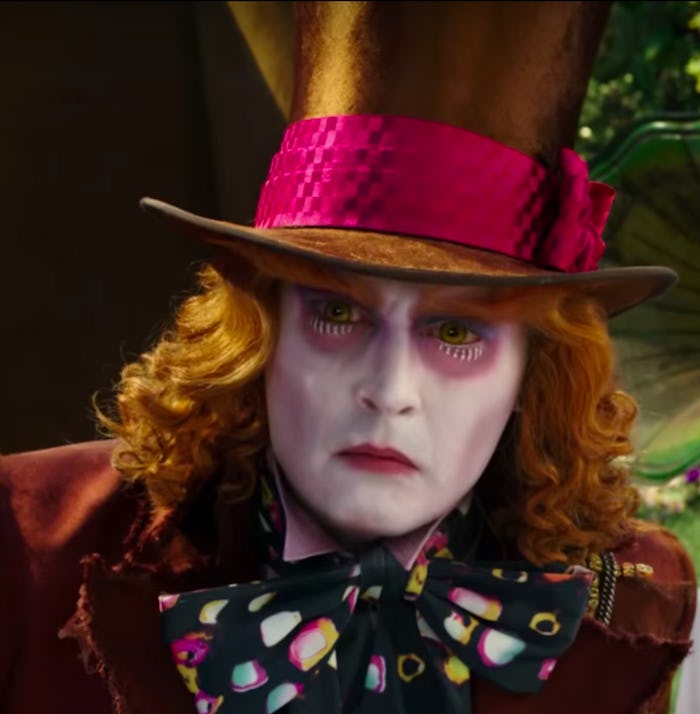Is The Hatter's House A Real Place? 'Alice Through The Looking Glass' Fans Want To Know
When Lewis Carroll's classic 1865 fantasy novel Alice in Wonderland made its modern-day live-action silver screen debut in 2010 (in 3-D, no less), it garnered more than $1 billion, breaking all kinds of box office records as it wowed audiences with its stunning costumes and effects. So when its highly anticipated sequel, Alice Through the Looking Glass, premiered Friday, fans were ready to be absolutely inspired not only by performances from Mia Wasikowska as Alice, Anne Hathaway as the White Queen, and Johnny Depp as the infamous and eccentric Mad Hatter — but by elaborate costumes and CGI effects as well. The Washington Post described the visual elements of the movie as "a sight to behold." However, one location in particular captured viewers' hearts, and had them asking: Is the Hatter's house a real place?
Both of director/producer Tim Burton's interpretations of the Carroll novels have been lauded for their visual appeal, while reviewers and others agree that the films are lacking somewhat in plot and character development. The Wall Street Journal's Joe Morgenstern, for example, wrote that Alice in Wonderland is "visually ornate and dramatically bland." And while Stephanie Merry, writing for The Post, wrote off the sequel as "a joyless, jumbled mess," she conceded that "clearly a lot of thought put into making the movie look spectacular."
So can you visit the Hatter's house and see all that fantastic imagery for yourself? Probably not. It's likely that the Hatter's house, along with many other aspects of the Alice films, was purely and technologically contrived, combining aspects of Carroll's original renderings and a modern-day production team's interpretation, and enhanced by new-fangled CGI effects.
In 2010, Antony House in Cornwall, England, was a shooting location for many of the scenes in Alice in Wonderland, boosting tourism there. The Hatter's house, by contrast, was likely filmed completely on-set — but a new and ever curious world all its own was the end-prize that made up for that fact.
The action in Through the Looking Glass pivots around the fact that Depp's Hatter is so depressed that he can't leave his house, because he has become convinced that his family — previously believed to have been killed by a Jabberwocky — is alive, but no believes him. Alice helps him out, and she travels though time to do it. The Hatter's house is also the site of his famous tea party, which spurred the enduring riddle of what happens when the guests use up the dishes in the books.
But the film adaptations diverge from the books significantly. This gives the team doing the reimagining plenty of freedom to create its own versions of places and people originally introduced in the classics. For example, Depp as the Hatter is a "clownish drag performance," Katie Walsh of The Minneapolis Star Tribune wrote; The Red Queen is "a horror ... Bette Davis as Elizabeth I and reconfigured as a bobble-head doll," according to a Times review by Manohla Dargis. It's all pretty incredible.
The same can be said for the Hatter's house: While it probably has no real physical location, it makes up for it in whimsy. And in a film like Through the Looking Glass, that's what really counts.
